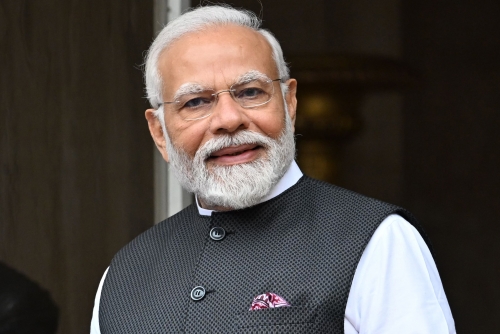Best wishes for Chandrayaan-3 as India aims for the Moon
Agencies | New Delhi
The Daily Tribune – www.newsofbahrain.com
India's Prime Minister Narendra Modi took time out from his ongoing state visit to France on Friday to wish the Indian Space Research Organization (ISRO) scientists a happy launch day for the Chandrayaan-3 mission, adding, “The 14th of July 2023 will always be etched in golden letters as far as India’s space sector is concerned. Chandrayaan-3, our third lunar mission, will embark on its journey. This remarkable mission will carry the hopes and dreams of our nation.”
Modi tweeted a sequence of photographs of the LVM-3 rocket and the spacecraft, asking people in India and throughout the world to learn more about India's third lunar trip, saying, “Best wishes for
Chandrayaan-3 mission! I urge you all to know more about this Mission and the strides we have made in space, science and innovation. It will make you all very proud.” Modi went to the ISRO centre in Bengaluru on September 6, 2019, to witness the soft landing of the Chandrayaan-2 lander and consoled the then ISRO chairman, K Sivan, who became emotional when the Vikram lander crashlanded, by embracing him and patting his back for a few minutes.
He then bolstered the ISRO scientists' morale and urged them to keep trying, saying, "You ventured into a place where no one has gone. Your best is yet to come.” Explaining the significance of India’s earlier two moon missions, PM Modi on Friday tweeted, “Thanks to our scientists, India has a very rich history in the space sector.
Chandrayaan-1 is considered a path-breaker among global lunar missions as it confirmed the presence of water molecules on the moon. It was featured in over 200 scientific publications around the world. Till Chandrayaan-1, the moon was believed to be a bone-dry, geologically inactive and uninhabitable celestial body.
Now, it is seen as a dynamic and geologically active body with the presence of water and sub-surface ice. Maybe in the future, it can be potentially inhabited!” On the achievements of the second mission, the PM said, “Chandrayaan-2 was equally pathbreaking because data from the Orbiter associated with it detected the presence of chromium, manganese and sodium for the first time through remote sensing.
This will also provide more insights into the moon’s magmatic evolution. The key scientific outcomes from Chandrayaan 2 include the first-ever global map for lunar sodium, enhanced knowledge on crater size distribution, the unambiguous detection of lunar surface water ice with the IIRS instrument, and more. This mission has been featured in almost 50 publications.”
Explaining the path of the third lunar craft towards the Moon, he tweeted, “Chandrayaan-3 will be inserted into the Lunar Transfer
Trajectory after the orbit-raising manoeuvres. Covering over 300,000 km, it will reach the Moon in the coming weeks. Scientific
instruments onboard will study the Moon’s surface and enhance our knowledge.”
Related Posts

